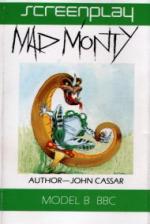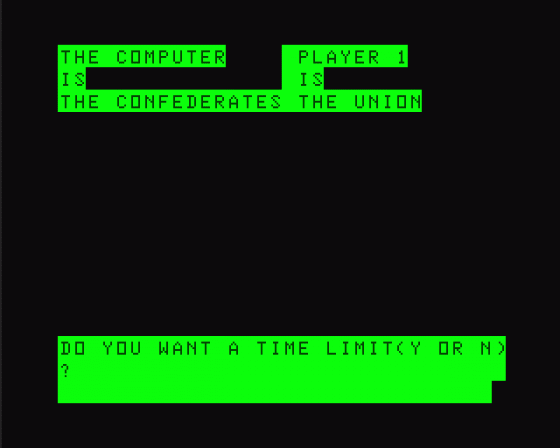
Dragon User
 1st June 1984
1st June 1984
Categories: Review: Software
Author: John Scriven
Publisher: Screenplay
Machine: Dragon 32
Published in Dragon User #014
John Scriven's task is made more enjoyable as the quality of games steadily improves, and new life is breathed into the Dragon's software
Introduction
Since that far-off day in 1982 when I first looked at the tentative offerings tor my shining new machine, I must have seen something like 300 programs for the Dragon. I often wish that programmers could have also seen these, so that they didn't try to re-invent the wheel. If there are already 10 perfectly good versions of Alien Splat on the market, producing an eleventh is a waste of time, and changing the shape of the invader hardly counts as original.
Brainwaves
What is needed is an input of new ideas and Dragon owners are lucky that these have at last started to appear. Although there are some longlasting favourites, a novel program often leaps to the top of the software charts. (Witness the success of Ant Attack and Manic Miner for the Spectrum.)
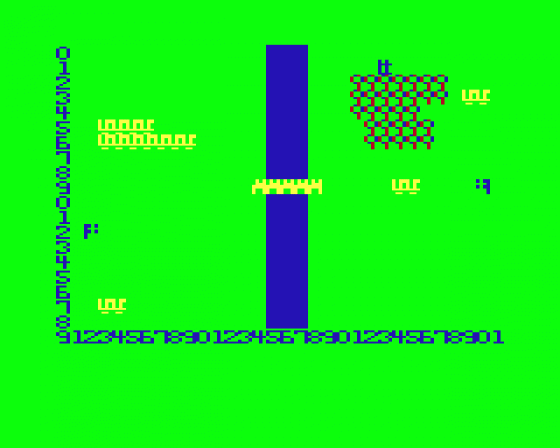
When I see the umpteenth copy of Invaders I can only feel sorrow for the person who spends their hard-earned cash on someihing they've already got, sorrow for the firm that has wasted its programming expertise for nothing and sorrow for the stagnant state of the industry.
Hungry Horace (Melbourne House)
However - a breath of fresh air has been blowing along this poor reviewer's corridors, and this month a bunch of superb programs arrived on my mat. Thinking of Spectrum programs like Manic Miner reminded me of one that cost me many hours of sleep when it appeared 18 months ago - Hungry Horace from Melbourne House. Perhaps programmers were put off by the Dragon's 6809 processor; whatever the reasons, there have been fewer fast games with interesting graphics than for the Spectrum and Commodore. If Hungry Horace has indeed taken 16 months to convert, then it's been worth the wait.
Your job is to control Horace, an endearing little character who has an awfully large appetite. He runs along paths in a park devouring everything in sight. There are bridges and tunnels, and just to make your task a little more difficult, some park-keepers are out to catch you and throw you out of the park. Once you've reached the end of one section, you can go on to another that is different in shape.
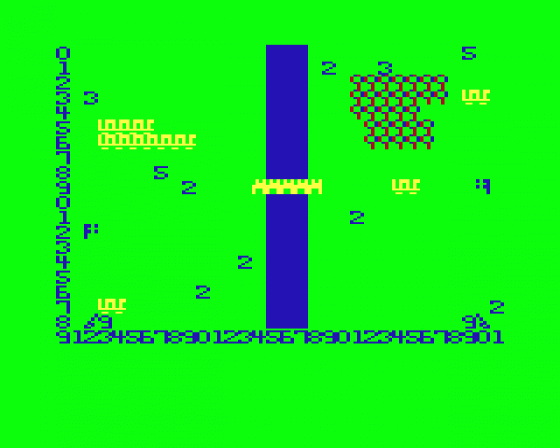
If you steal the alarm bell in any of the sections, the guards rush off in panic, dropping their lunch packs. Naturally enough, Horace will eat these with relish and increase his score. If you're lucky enough to be caught, then you get thrown out of that section of the park. Control is by means of the cursor keys or a joystick, and the graphics are excellent.
If you like maze chasing with a difference, then I can heartily recommend Horace.
Perhaps Microdeal's Cuthbert has a new rival, and soon Horace wilil be skiing and fighting spiders like he does for Sinclair owners.
Pedro (Imagine)
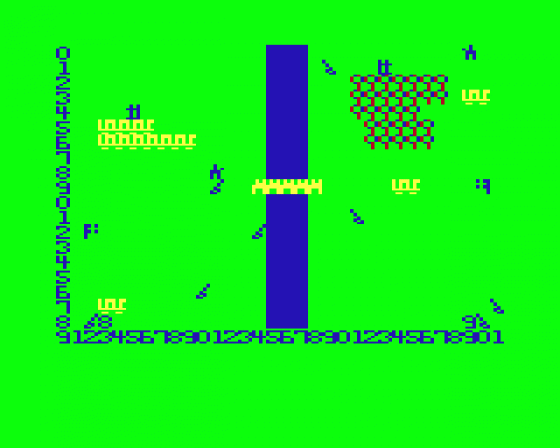
Just as Horace is a friendly game, and neither Horace nor the park-keepers get permanently damaged, so Pedro, from Imagine, is a mild-mannered program. In fact, the only creatures to suffer are marauding garden pests. Pedro is an unfortunate Mexican who has a beautiful garden full of flowers. He is unfortunate, because everyone from miles around has heard of his prize blooms - including rats, locusts and the village tramp. Pedro can block paths with bricks, chase the invaders and even stamp on them, but they still end up with his plants. He can plant seeds and move compost and bricks, as well as run and jump, but he can only do one thing at a time.
The screen drsplay is good - a 3D view from above and to the side, and has a lot of detail. This is the second Dragon game I've seen from Imagine, and has apparently been released at the same time as versions for other computers. Although the subject may not sound too exciting, Imagine have produced a game of high quality, and it's a pleasant change to see a fine game from a software house on this side of the Atlantic.
Mad Monty (Screenplay)
Mad Monty from Screenplay is not really in the Pedro class, but is still an interesting game to play. You control a slithering python that needs to devour frogs, toadstools and magic mushrooms that litter a garden. There are different speed levels, and as you consume the various delights, the length of the snake increases, thus making it difficult to avoid crashing into the walls or indeed sections of your ever-lengthening tail. Although it's not a bad game, the slow keyboard scan of the Dragon means that control is not all it could be, and it takes a while to learn the tricky art of snake control.
Ultrapede (Softek)
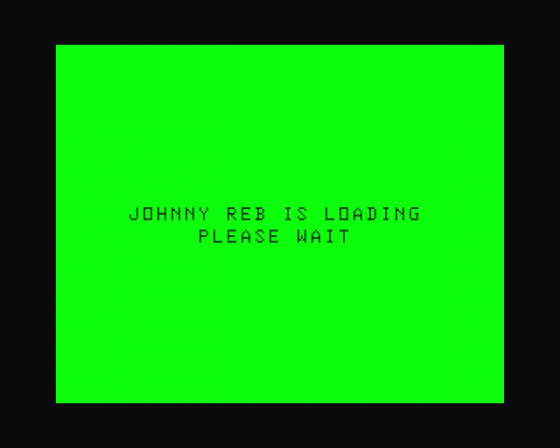
Another program that involves creatures slithering across your screen is Ultrapede from Softek, in fact, a fairly good version of Caterpillar. The Ultrapede rushes down the screen at top speed (at higher levels it resembles an express train). You can move your position by control keys or a joystick, and you have to avoid the Ultrapede while shooting the mushrooms. Destroying the Ultrapede is difficult, as when you shoot it, the separate sections continue to move on their own, and Brian the Snail makes a guest appearance dropping tiny spiders that cannot be destroyed. If you like high-speed garden pests and are a fan of the Magic Roundabout, this could be just what you're after. One of the most irritating games on offer this week is Shaft from Dragon Data. This is nothing to do with the black investigator with a sharp line in leather raincoats, although you can choose to play the part of Ruck Furd or James Bund in the game. The object is to dodge blue lifts that move up and down the screen while moving a small figure across to reach the far side. Here you can take a yellow lift to the next level and attempt to get back to the other side. Gaining points all the time, you eventually reach the top of the screen, however, all is not as it seems, and avoiding the lifts is very difficult.
You may like the challenge of a game as difficult as this one, but it does seem to be pitched towards the top of the difficulty tree, and there seem to be small rewards for all the frustration.
Junior's Revenge (Dragon Data)
About three years ago, someone in a dark corner of Japan who clearly enjoyed watching old American movies decided to write an arcade game about a giant gorilla which had captured a girl. Although computer graphics aren't up to portraying the assets of Fay Wray (or Jessica Lange, for that matter) to their full, the game took off. Unfortunately, the programmer was more used to Kanji characters than western letters, and instead of calling it Monkey Kong, he called it Donkey Kong. Thus was born the entire generation of barrel-dodging figures clambering up the scaffolding to the top of the Empire State or Twin Trade Towers in Manhattan to rescue the damsel in distress. This game has been criticised by feminists as being typical male chauvinist fantasy. To counter this claim, you might have expected a version whereby a woman is portrayed in the role of rescuer. Instead, what emerged was a game in which the gorilla liberation front sent in their best fighter, none other than Kong's son, Junior.
Dragon Data calls its version Junior's Revenge, and it is a very good copy of the arcade game. Luigi has captured your father, King Kong, and you have to rescue him from his cage. Normally a simple task, this is made more complicated by the trained animals Luigi employs to frustrate your task.
The first screen is comparatively simple, and consists of various islands and vines that enable you to reach the cage where your daddy is held captive. Swinging across with your joystick, you can reach the second screen which involves pushing keys into place while climbing up long chains. The third screen is like the first, but the fourth has conveyor belts and trampolines to confuse you, and after some repetition you will eventually arrive at the killer - screen seven, Luigi's hideout. This has both conveyor belts and sparks to avoid, and you may eventually be allowed to get close to releasing your father.
This is an excellent copy of a good arcade game, and has a choice of practice or real games. A difficult game to master, this is one that should be included in any serious collection.
The next game I looked at would have sold well two years ago, when a little island in the South Atlantic absorbed most of our attention. In many ways, I'm glad this game has only just appeared, as modern warfare and video games have approached each other to the level where they are sometimes difficult to tell apart. Jump Jet sits you at the controls of a Harrier fighter. You control the movements by means of the joystick, and are instructed to fly the plane through a wave of enemy bombers attempting to knock out the airstrip to an island where you will see the fortress. There are 10 levels, ranging from difficult to merely impossible, and the game includes speech synthesis at a rather rudirrentary level. "Get lost" it kept muttering at me until I realised it was saying "jet lost". It also rattles out "attack" through your TV speaker with something approaching the clarity of an airfield tannoy system.
In spite of my earlier reservations, this is an exciting game, although the wrap-around screen is irritating; when you fly off the right-hand side of the screen, you reappear on the left side, and the display scrolls so slowiy that the effect can be rather disturbing. Certainly it will take a lot of skill to fly to the island and destroy the enemy.
As you start with eight planes you could imagine that your task would not be too hard. In fact, the attacking planes are capable of bombing the runway and destroying remaining planes, so you end up with less machines than appear at first sight. The difficulty is set by your ability to succeed at each level, although the initial level can be set at the keyboard. Pressing the reset button allows you to choose the initial level again. (Level nine gives you two planes on the runway, but you don't stand much chance of even leaving it.) The animation could be smoother, but the game is entertaining and fairly novel.
Although it brings back sad memories of recent naval campaigns, if you can forget the connotations, you may find this game a suitable addition to your collection.
3D Space Wars (Hewson Consultants)
My arcade-action award this month has to go to Hewson Consultants for 3D Space Wars. Last year, they issued a tape called Dragonfly, which was a competent, if rather elementary flight simulation program. 3D Space Wars is also a flight simulation program, but one that has indeed come of age. This program gives you the view from the cockpit of a spacefighter set against a fleet of Sieddab raiders. Your mission is to destroy them while maintaining a reasonable level of fuel.
The screen is full of the enemy space ships swooping and diving at you in a most realistic manner. All the while you are firing at them, they are shooting back, and your fuel reserves are getting low. The solution to this problem lies in locating a refuelling vessel that you must line up in your sights. Woe betide those of you foolish enough to blast it with your lasers! The whole secret to this game lies in locating the refuelling vessel every four minutes or so and making good use of it.
Without refuelling, your task (whatever it may be) is doomed to failure. The screen display is superb, with enemy ships zooming at you and increasing in size as they approach, as well as shellbursts on the nose of your ship and laser shots that are shown graphically. Although the combined forces of the baddies, oops, Sieddab raiders, is always more than mortal man can face, Hewson Consultants have produced an excellent game that forces you to send the rest of the family away while you turn up the TV volume and lose yourself in inter-galactic battles. Definitely my favourite game of the month.
Ugh! (Softek)
Any firm that calls a game Ugh! can't be all bad, and Softek have recently unveiled a program that goes by this inauspicious title. Although early man had merely to contend with mammoths and sabre-tooths, like the film 1,000,000 years BC, this game gives you the opportunity your forefathers never had - being chased by Pterodactyls and T Rex's while pinching eggs from the former.
The screen shows a couple of zig-zag paths with three caves. You control the hero, called Ugh! and steer him to the pile of eggs. On the way you may meet Rex, the Tyrannosaurus, but if you're not carrying any eggs you can throw a spear at him. While this is going on, Terry the Pterodactyl is dropping rocks on to your head. You have four lives, and there is only one space on the screen that is safe - your home cave. As you spend more time escaping from Rex, you forget to look up in the air, and an awful thunk sound comes from the speaker. This is a novel game that is fun to play, and there are comprehensive instructions at the start. There are several different screens and 18 skill levels that change immediately as you improve, so you will be unlikely to tire of Ugh! too quickly.
Galacticans (Softek)
Also from Softek is Galacticans, so you can guess which arcade game this is supposed to represent! Hordes of whirling ships descend from the top of the screen, while you race left and right along the bottom avoiding them and frantically firing your laser. When you clear one screen, you are confronted by... just another screen wilh more of the unpleasant creatures. There is on-screen scoring, rather nice sound effects, and the display is reasonably clear. Why then should I sound as if I have my doubts? I enjoy well-written fast space games, but this seems almost as boring as I*v*d*rs! There doesn't seem to be much point in playing again, and it's not likely to be the kind of game that involves many different skills. The sort of space game that I'd pay money to play in an arcade would have to be something of the calibre of Moon Cresta or Defender, and however well Galacticans may be written, it looks a little old-fashioned set against the latest Dragon games.
Johnny Reb (Lothlorien)
Lothlorien have been producing war games for the Dragon for some time now, usually set in the past, Johnny Reb is no exception, and as the name implies, is set during the time of the American Civil War. You can use the computer merely as a display screen and play against another human, or you can pit your wits against the computer itself. There are several options available at the start, including whether you wish to fight for the Yankees or the Rebs, and how you wish to divide up your army into artillery, cavalry and infantry.
When play starts, you are shown the playing area, with a river running down the middle. Your troops are arrayed on one side, and the computers on the other. You can move your pieces around the screen as well as firing the artiillery pieces, and the game is over either when one side's flag is captured or when a preselected time limit has expired.
Having seen previous Lothlorien games, I was expecting some exciting graphics during the interchanges, but apart from the odd cannon-ball whizzing across the screen, nothing much happens, and the responses at higher levels are rather slow. If you are a serious war-gamer you will probably find this program entertaining, but it didn't interest me as much as Tyrant Of Athens and Samurai Warrior.
Shaper (Shards)
Shards is well-known for its series of educational and adventure programs. This month I've been looking at something completely different from them. Shaper is a sound utility program that allows you to define your own sound effects and store them for use in your own program. The package contains the main program together with a library of pre-programmed sounds. As the Dragon does not have its own sound chip, some manufacturers have produced add-on devices. The problem (pointed out in Shaper's documentation) is that programs written to utilise these will only work on other Dragons that also have the sound board.
Based on a sound idea (sorry!), how does the program perform in use? Firstly, it's simple to program your own sounds. After the rather noisy opening screens, the initial menu appears, giving you the choice of explanations, assistance, listening to the library and building your own sounds. If you select "build" as an option, you will be given instructions and then shown a list of the 10 parameters that have to be entered. These include squeeze, expand and chain, as well as the more usual volume, frequency and envelope values. At any time you can press the space bar to listen to the sound so far.
When the sound is to your satisfaction, you can select the save option and store the sound effect on cassette. You can now enter the program you wish to employ your sound in, and load in the effects at the end. If you prefer, you could use one of the sounds included in the library. Some of these are quite amazing, and vary from UFOs and tank battles to fairly melodious synthesiser sounds. At the end, you are shown how to use the start of the Basic program to load in graphics and title pages with your own program.
Accompanying the program is an A6 booklet, with 36 pages of detailed notes and diagrams. This is very well written and makes using the program simple. As it is said: it all else fails, read the manual. In this case, the program is well documented internally, but the booklet adds the finishing touch to a very fine utility.
When the Dragon first appeared, I'm sure that many people bought it because of its "real" keyboard. They probably imagined that it would be useful as a word-processor, and as a text storage medium.
Unfortunately, when they arrived home with their new toy, they were rather disappointed to discover that it didn't have lower case on the screen, and the display was only 33 characters wide. Word-processing programs have appeared that tried to cope with these problems by re-defining the character set and reformatting the screen. Mostly, however, they are expensive - like the Microdeal version.
Editext (Nectarine)
There are some programs about that put up with the Dragon's limitations and attempt to use the computer as it is. One such program came my way this month, Editext, from Nectarine. In fact it's really two programs, as there is a disk version included on the cassette at no extra cost.
On loading, the initial display is a menu with nine options: new text, view lines, edit, continue, print, save/load, line editor and end. The text is entered in one large chunk, and the program takes care of word-wrap, so you don't have parts of words hanging over ends of lines. If you view the text, you discover that each line has been given a number, and this makes line editing easier. The program can store up to 450 screen lines, which is somewhere about six sides of A4 print-out. Most of the menu options are fairly self-explanalory, and there is an A6 booklet containing 18 pages of clear notes.
There is a separate primer menu giving the options of draft or formatted print, and the opportunity to change printer format and typeface. The formatting commands include all the usual ones of left and right margins, line spacing and number of copies. You can also choose to have the text justified (spread out so that the words touch both left and right margins, as most magazines and newspapers are arranged). If you choose to go to the typeface menu, then you can change the size and design of the letters according to your printer. On loading, it is set up for the Epson FX-80, probably one of the most popular printers around at the moment.
I've usually been disappofnted by the word-processor packages around for the Dragon, and the only good ones seem overpriced. It's clearly unfair to compare Dragon programs with those designed for a machine with 80-column display: however, Editext is easy to use and reasonably cheap. If you can accept the disability of never seeing your formatted text until it issues forth from the printer, then you couid do worse than plump for this program.
Sprite Magic (Knight)
Friends of yours who own Commodore 64s probably boast about their wonderful facilities, including upper, lower case and sprite graphics. I'm sure that you point out that the Dragon has a much better copy of Basic and is a lot easier to program. Now you too can have sprites and lower case on the Dragon if you own a copy of Sprite Magic from Knight Software.
With sound utilities, you may possibly get better effects with plug-in cartridges, but the programs you write will only work on machines that also have the cartridge. The same is true of graphic enhancers; if you use a purely software-based utility, you can transfer the programs to any Dragon. The main program consists of some machine code that is loaded at the top of memory and acts by adding extra key words to Basic. Once this is loaded, you can write a normal program to use the new words or look at the demonstration programs.
There are over 40 new statements that are very comprehensive and allow you far more than simply defining up to 126 different sprites and moving them around the screen. There is collision detection, movement control by keyboard or joystick, and maze modes where sprite zero chases all the others or vice versa. There are a whole set of new error messages, enhanced sound commands and even a scoring feature, so games are very easy to implement. These are described in detail in the 24- page booklet that comes with the package. The set of commands are more comprehensive than in any other utility I've seen, and include more than you get on, say, Simons' Basic for the Commodore.
One of the nice features of this package is the collection of demonstration programs. The first simply shows large characters floating around the display. When you press break, you discover that the whole character set has been redefined four times as large, so pressing List looks rather strange. The next program gives you normal sized upper/lower case as well as the opportunity to redefine all the character set using cursor control keys on a large grid.
Program three lets you output new sounds, and number four shows a large chess board with moving pieces that execute "fool's mate". The winning pieces even jump up and down after their victory. Program five lets you shoot at some fairground ducks that drift across the screen, and number six is a version of Breakout, where you attempt to demolish a wall. The final program is a maze chess game that demonstrates sprite control. This is a very professional program and can certainly be recommended.
Coming Soon
Next month I hope to look at some more sprite utilities as well as the latest games, two language packs - Pascal and Forth - and also a compiler to add some zip to your Basic programs.
I find it hard to believe that for two months now I've been faced with such good and varied software. Instead of being the poorer relation in the family of micro owners, compared to their Sinclair and Commodore cousins. Dragon owners now have as large a choice of quality software as anyone else. The problem must be which programs they can live without. There are many excellent programs on the market and their standard is improving all the time. Let's hope it continues to do so.
Other Reviews Of Mad Monty For The Dragon 32
Mad Monty
A review by Jim Ballard (Personal Computer News)

